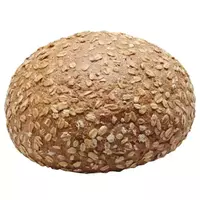Rye-free bread

Since the very times when people have learned to process cereal grains into flour, bread and bakery products have been included in the list of the most sought-after and vital food products. Bread has a special place in the daily diet of the vast majority of the inhabitants of planet Earth.
Currently, bakery manufacturers can offer modern consumers a rich range of varieties of bread. However, recently there have been more and more disputes and discussions about the benefits and harms of certain types of bread. For example, a popular healthy food product is yeast-free bread. As is often the case, experts were divided into two opposing camps.
Composition of yeast-free bread
Supporters of the product argue that the unique beneficial properties of yeast-free bread are simply obvious, just look at the vitamin and mineral composition of the bakery product. The main feature of the composition of yeast-free bread is that baker's yeast is not used when preparing the product. Since there are no yeast crops in the composition of yeast-free bread, the product does not harm the human body.
It is believed that the beneficial properties of yeast-free bread extend to the entire human body as a whole. On the shelves of modern grocery stores, it is fashionable to find a single type of yeast-free bread. The type of non-yeast bread, as well as the calorie content of the finished product, depends primarily on the composition of the initial ingredients that will be used in the baking process of the bakery product.
The calorie content of yeast-free bread is at a fairly low level in comparison with other more familiar types of bread. The average calorie level of yeast-free bread is about 17
7. 71 Kcal, which are per 100 grams of product. According to some experts, the main benefit of yeast-free bread is the absence of baker's yeast in the product.
The benefits of yeast-free bread
Scientists confirm that with frequent consumption of food from fermentation products, the human body suffers from rapid fatigue, as well as increased susceptibility to the adverse effects that many environmental factors have. Supporters of yeast-free bread defend the data of scientific research during which a connection was revealed between yeast and the development of malignant cancers in the human body.
Harm of yeast-free bread
However, not everything is so simple and in addition to the benefits of non-yeast bread can harm human health. However, in fairness, it is worth emphasizing that the harm of yeast-free bread can manifest itself if the product contains the so-called wild yeast. Often, modern food manufacturers under non-yeast bread offer customers a product made using special yeast crops.
Wild yeast opara is obtained by processing hop cones (hop sourdough) or willow rods (natural sourdough). Researchers assure that wild yeast is absolutely no different from baker's. Therefore, the harm of yeast-free bread, which includes wild yeast instead of bakery ones, can also harm the state of health and normal well-being of the human body. Real yeast-free bread is produced without any kind of yeast from fresh dough.
Such a product really has a number of certainly useful properties for the human body, which have been used for a long time in the therapeutic diet. Yeast-free bread helps in the prevention and treatment of certain diseases of the gastrointestinal tract, and also contributes to the normalization of metabolic and digestive processes.
grain-free bread 177.71 kCal
Energy value of yeast-free bread (Ratio of proteins, fats, carbohydrates - ju):
Proteins: 5.77 g (~ 23 kCal)
Fats: 0.51 g (~ 5 kCal)
Carbohydrates: 37.54 g (~ 150 kCal)
Energy ratio (bj | y): 13% | 3% | 84%
 Español
Español Français
Français Português
Português Русский
Русский 简体中文
简体中文 繁體中文
繁體中文 日本語
日本語 한국어
한국어 العربية
العربية Türkçe
Türkçe Қазақ
Қазақ Deutsch
Deutsch Italiano
Italiano Українська
Українська
